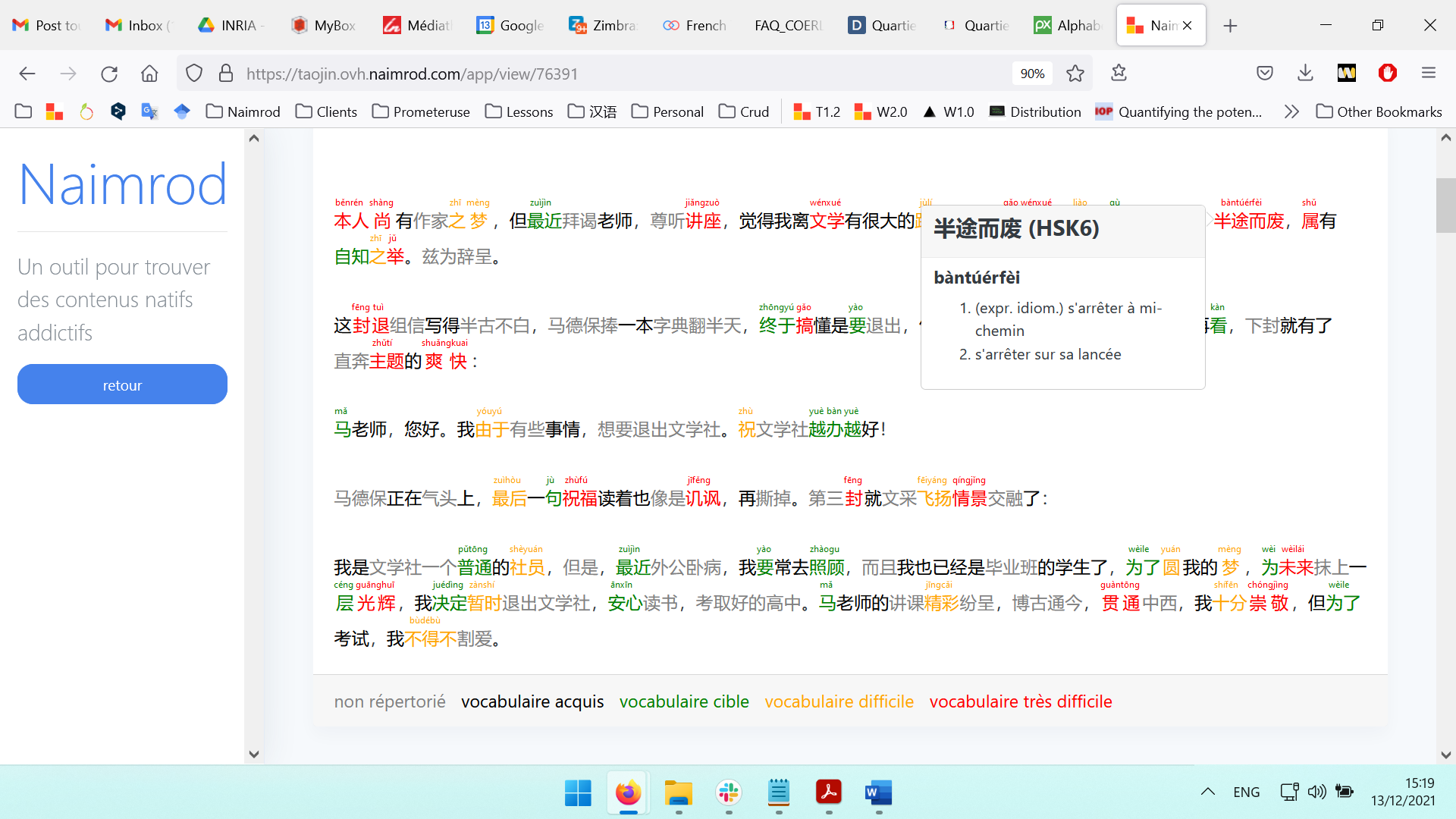
Making learning addictive
My name is Naimrod, taken from the name of the legendary king Nimrod, who undertook the construction of the Tower of Babel, incurring the wrath of God. Legend has it that humanity was dispersed and that thousands of different languages appeared, meaning humans were no longer able to understand each other. I, Naimrod (Nimrod combined with artificial intelligence or AI), am not looking to discover a single language for humanity, but I will be able to help people to get to grips with languages. There are a whole host of applications, programs and tutorials all promising to make it easy to learn foreign languages, and there is high demand within society. But who has actually become bilingual using one of these digital tools? With online learning, huge numbers of students soon lose interest. But there is one method left to consider, and perhaps new technology to incorporate. In this sense, I am a new player on the market, introducing deep tech to language learning.
The Naimrod equation
My secret lies in a formula: NLP + FCA. The NLP - which stands for Natural Language Processing - is my algorithm, developed by Marc Dinh, my technological developer. My NLP technology gives me the capacity to do what language teachers do when they show their class an extract from a film or TV show to discuss a specific grammar point. My algorithm is able to do this on a large-scale, and to do so automatically. This is the first part of the Naimrod method: providing learners with native, original content taken from streaming platforms and sorted by level of vocabulary and grammatical structure. Here is my sales manager and future CEO Benedict O’Donnell talking about an algorithm which makes learning addictive: “Native content puts learning into context, immersing you in the culture of the language you are learning. Naimrod exploits the guilty pleasures of its users: their addiction to TV shows, music, comics, movies... Once the lesson is over, users want to find out how the story ends. They continue watching the show, and they stay immersed in these new languages, keeping them engaged in the learning process.” As for the second part of my equation, Marc and Benedict found it in a research team linked to Inria.
Exploring knowledge with Orpailleur
My technological model was found in October 2020 when Marc and Benedict met Miguel Couceiro, a professor-researcher at the University of Lorraine and head of the project team Orpailleur at Loria. It was Inria’s technology transfer division which had put my founders in touch with the researcher. Benedict O'Donnell remembers the brainstorming session: “I had just presented Naimrod to several researchers, but we hit it off with Miguel because we both came up with the same idea at the same time: to combine our algorithm with their research in mathematics. This gave considerable powers to Naimrod.” In particular, Miguel Couceiro studies Formal Concept Analysis (FCA). The concept, in a mathematical sense, is to mentally represent the attributes of a piece of data (or instance). FCA applies order and lattice theory, which is used to discover and investigate structures implicit in data, in my case, to structure and understand how knowledge of a language is acquired. The researchers from Orpailleur gave me a learning space: an ordered structure that supports learning pathways for acquiring a language. Miguel Couceiro looks back fondly on this collaboration: “The learning space was still very theoretical. Naimrod gave us the opportunity to apply it to concrete examples, such as learning Russian or Mandarin.” Eduardo Calò, “a brilliant student” of Miguel Couceiro’s, served as a bridge between Loria and Naimrod. As Benedict O’Donnell recalls: “Eduardo was an incredible intern, a real catalyst”. The young researcher has just completed his MSc. And is currently pursuing his doctoral studies. He is heading towards new horizons in natural language processing, but in 2021 he successfully applied FCA to linguistics.
Naimrod “in sniper mode”
As Miguel Couceiro explains: “Ranging from reading, writing, listening and speaking skills, language level is very subjective, making it hard to pin down. For English you have TOEFL, which determines and outlines the different levels, but in China, Mandarin has a totally different classification system for learning levels. Here, FCA has proven to be extremely useful.” As Benedict O’Donnell recalls: “We started out with Mandarin and a group of Mandarin teachers really helped to improve Naimrod, but it was the same headache for all languages: in discussions with specialists in linguistics, the issue of properly identifying the level of learners came up again and again. Once FCA is fully integrated, Naimrod will allow learners to progress with their learning “in sniper mode”, with high levels of precision.” Students will be able to use me to navigate the choppy waters of learning a language, and will enjoy working with a wide range of native content.
Towards a language learning revolution
I was registered as a company in November 2021 and I am already working with the University of Paris 3, engineering schools and one business school. Since March 2022, I have been awarded a grant from French Tech Tremplin and have started working at Agoranov, a deeptech incubator to bring my first product to the market, the aim being to transform a prototype into a marketable product. The tests carried out with Eduardo demonstrated a proof of concept: FCA has the capacity to revolutionise language learning. This research could be further developed, and I must continue to collect data in order to progressively integrate this deep technology, which I already have the equation for. My future CEO is certainly confident: “It will take a few years for things to get off the ground, but we already have a huge amount of enthusiasm at our fingertips.”
Born in a bar in Las Vegas - Marc Dinh meets Benedict O’Donnell
Let’s rewind to 2014. Marc Dinh was researching machine learning at the University of Nevada, Las Vegas, after having studied mathematics and computer science at the University of Paris 13. Benedict O’Donnell had finished his studies in physics and was just starting out in the world of entrepreneurship. On his way back from a business trip to California, Benedict stopped in the desert to visit a friend in Nevada. It was in a bar in Las Vegas, during a karaoke night, that Benedict and Marc began imagining Naimrod together: Marc would be the brains behind the operation, while Benedict would be its spokesperson. The dream began to take shape, and Benedict now has his sights set on the start-up becoming a unicorn: “Natural language processing provides a range of extremely powerful technological building blocks, but it remains difficult to integrate them into products that are accessible to the wider public, hence the limitations of automatic translators. Marc is exceptional at cobbling cutting edge technologies together, and building Naimrod together is a thrilling adventure. This project offers us a golden opportunity, one that comes with a healthy dose of adrenaline each morning.”
